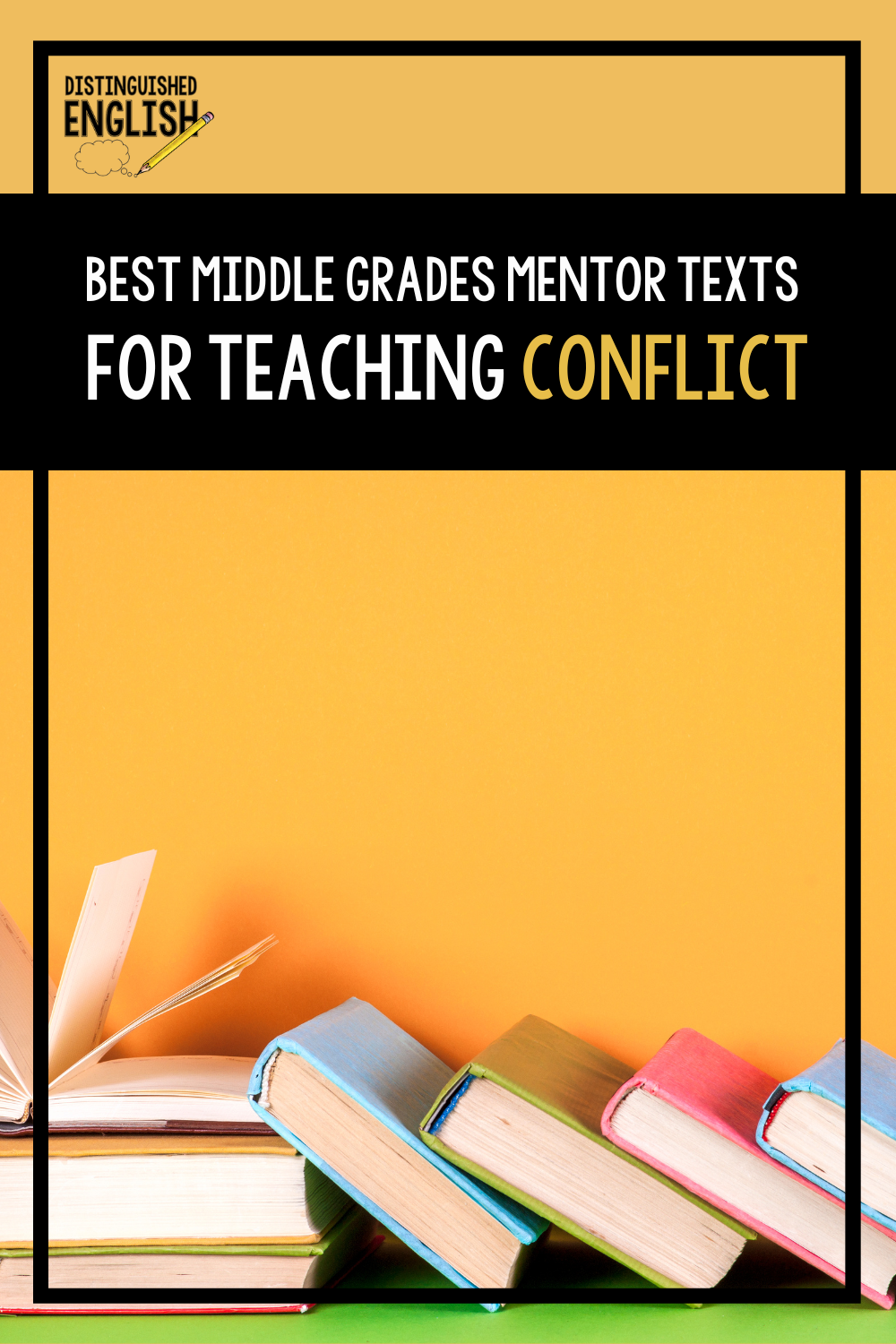Best Middle Grades Mentor Texts for Teaching Conflict
If your students are anything like mine, you’ve seen plenty of one-sentence conflicts in your students’ narratives.
“The train fell off the tracks.”
“My dad couldn’t find his wallet.”
“She lost all of her superpowers.”
The conflict (or the main problem) in a story make the reader feel something! It should be intense. It should make the reader flip the page to read the rising action.
But without seeing examples of well-described conflicts, our kids just don’t know how to write their own compelling conflicts in their stories.
Thankfully, there are thousands of well-written conflicts just waiting for our students to read them.
These mentor texts can give our students excellent examples of how to write an engaging conflict in the narratives they write.
(This post may include affiliate links. All opinions are my own.)
What Not To Do if You Turn Invisible, pages 5 + 6
The main conflict in this book actually appears at the very beginning of the book when the main character turns invisible. Yes, this conflict is a tad ridiculous, but the author does an amazing job of drawing out Ethel’s thoughts as she slowly comes to the realization that she is, in fact, invisible. (Find the book here.)
Runaway, pages 3 + 4
Wendelin Van Draanen knows how to hook a reader like no other. I could hardly put this book down! Runaway does have some sensitive content in the conflict, so you will need to decide whether or not is appropriate for your students. Holly lives in an abusive foster home, and out of necessity, she chooses to run away to find a better life. If you have a student population that has had a rough start in life, your kids might relate really well to Holly and her struggles, but it also might bring back some difficult memories and emotions. (Find the book here.)
Ungifted, pages 6-10
Gordon Korman is my favorite author on the planet, and Ungifted is such a fun book to read aloud with middle-school kids! The conflict in this book begins when Donovan Curtis smacks an Atlas statue on the butt with a stick. The globe falls off, rolls down the hill, and smashes into the crowded gymnasium, putting Donovan in a heap of trouble. This conflict will probably get some giggles from your students, but it’s also an excellent example of how to grab a reader’s attention with description, dialogue, and humor. (Find the book here.)
Restart, pages 1-12
I know I just recommended a Gordon Korman novel, but I cannot talk about compelling conflicts without mentioning Restart. Chase wakes up in a hospital with no idea who he is, and Korman does a masterful job of describing Chase’s thoughts and feelings as he attempts to figure out the answer to his burning question: What kind of person am I? (Find the book here.)
Stormbreaker, pages 1-12
The first chapter of Stormbreaker always grabs my students’ attention. Really, I can read any page from this book with the same reaction! The first conflict in this book occurs in the first chapter when Alex learns that his uncle has died in a car crash. Except . . . Alex doesn’t believe it. Horowitz builds intrigue and suspense that middle-school students can’t resist, and this shows them just how important it is to create a conflict that compels their reader to keep reading! (Find the book here.)
If your students are just beginning to write their narratives, check out these narrative resources!

